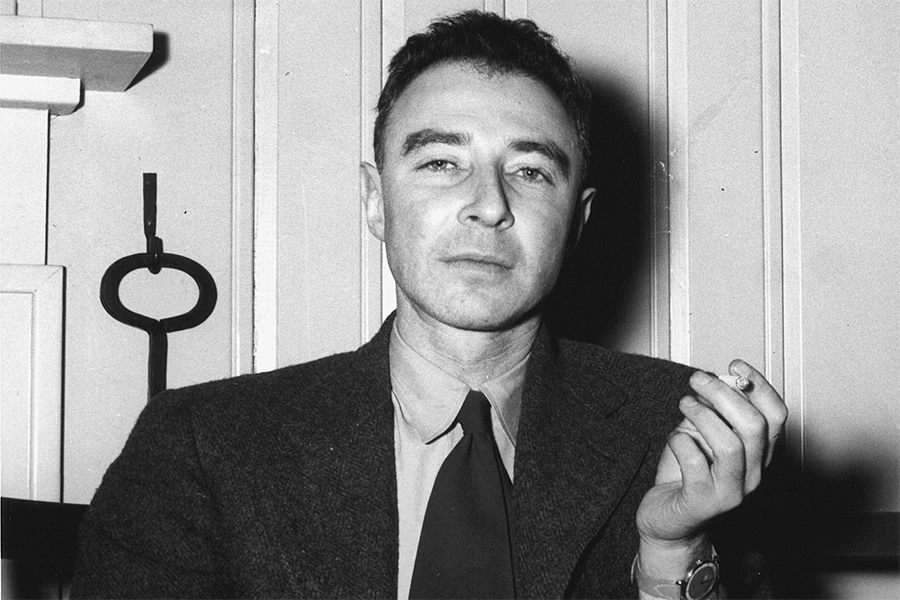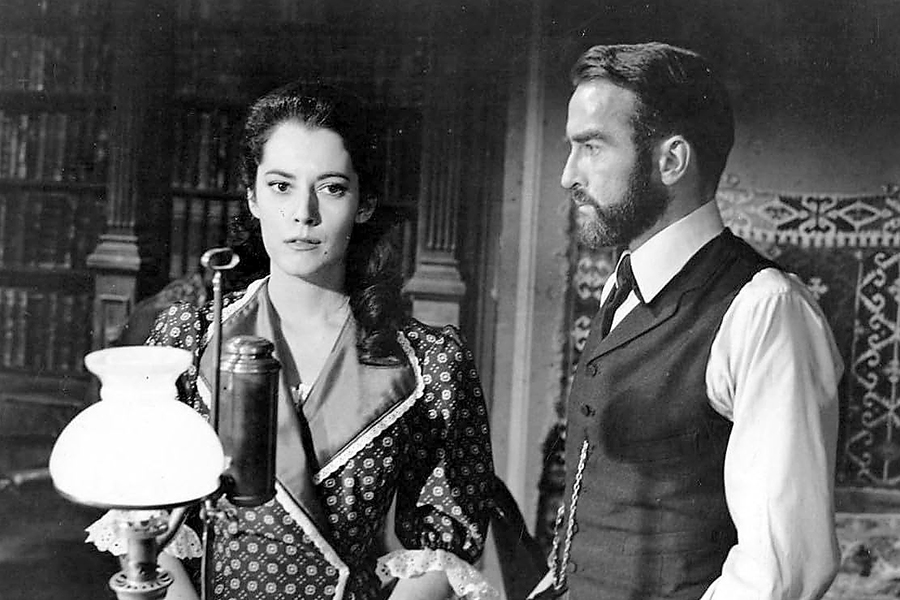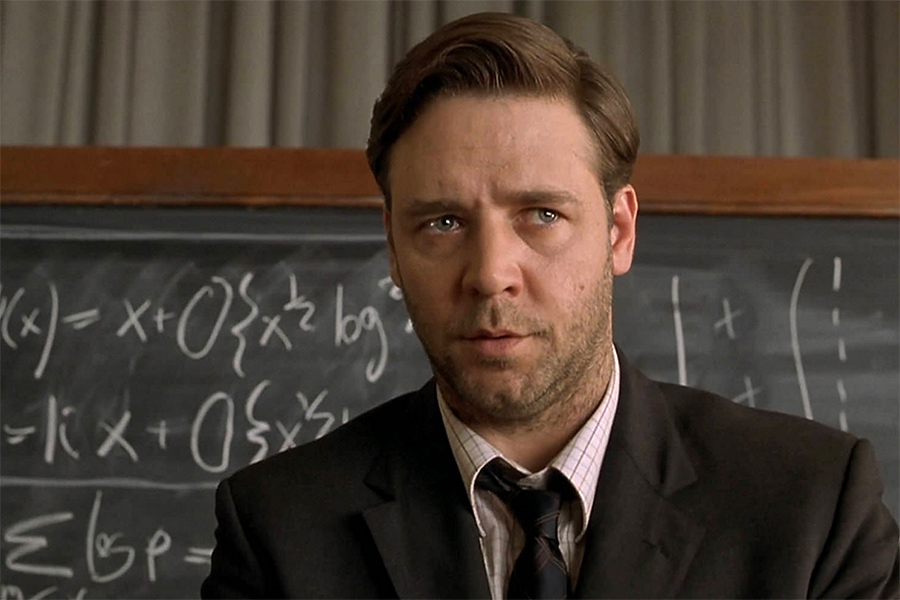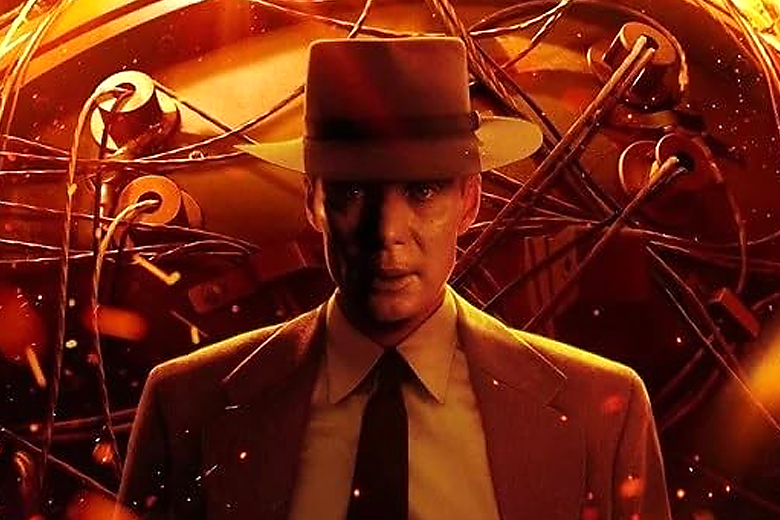A new film by the renowned director Christopher Nolan, titled “Oppenheimer,” has been released in Ukrainian cinemas. It is a biopic about the creator of the atomic bomb, Robert Oppenheimer (1904-1967), an American theoretical physicist. The project is exorbitantly expensive (officially budgeted at $100 million, unofficially $180 million) and, judging from the trailers, equally visually stunning. What can we expect from the premiere, and what other films about scientists are worth watching?
The Bomb-Man

Photo: Robert Oppenheimer. Source: Wikipedia
The personality and biography of Oppenheimer (affectionately nicknamed “Oppi” by his students) provide fertile material for an excellent film. A brilliant scientist who, in addition to creating the atomic bomb, was the first to hypothesize the existence of black holes. Yet, his scientific pursuits and teaching did not prevent him from having an in-depth knowledge of the “Bhagavad Gita,” one of the fundamental texts of Hindu religious-philosophical thought, which he learned to read in its original Sanskrit. He also learned French to read Marcel Proust in the original and gave lectures in Dutch during a brief period of work in the Netherlands.
As a student at Cambridge, he attempted to poison his scientific advisor and tried to strangle a friend during a scientific debate. He enjoyed playing the role of a dead person in amateur performances, sailed on his own yacht, and had a passion for horse riding. Oppenheimer was renowned for his skill in mixing cocktails and, suffering from tuberculosis, he never parted with his pipe, which eventually led to his demise at the age of 62. He was successful with women, taking wives from his friends, and he did not consider marital fidelity a virtue. He was nominated three times for the Nobel Peace Prize but never received it.
Coming from a very affluent family (after his father’s death, Oppenheimer inherited $400,000, an enormous sum by the standards of the late forties), he held pro-communist views and bequeathed his estate for scholarships. However, his views did not prevent him from reporting on communist colleagues working on the Manhattan Project (the program for developing atomic weapons from 1942 to 1945, based in Los Alamos, which local physicists humorously referred to as the “submarine base”). This, in turn, did not protect the scientist during the McCarthyist “witch hunt.”
One could say he was the ideal hero, as convincingly demonstrated by Kai Bird and Martin Sherwin, the authors of the biographical opus “Oppenheimer: American Prometheus Triumph and Tragedy,” a fascinating read akin to a gripping detective story. It comes as no surprise that Bird and Sherwin were awarded the Pulitzer Prize for their book.
Man the Movie Camera
British filmmaker Christopher Nolan (“Inception,” “Interstellar”), an ardent admirer and role model of Stanley Kubrick, has shown a keen interest in the natural sciences. Conspiracy theorists have attributed the staging of the American astronauts’ moon landing to Kubrick – these rumors seemingly emerged after Kubrick filmed “Barry Lyndon” using only candlelight and a special lens developed for NASA. So, when Nolan sets out to adapt articles from Science into screenplays and finally tackles the biopic of the scientist, it was only a matter of time.
As fate would have it, the stars aligned: the story of one of Nolan’s most ambitious films, “Interstellar,” revolved around a cosmic journey through a black hole. According to the director himself, Robert Pattinson suggested Oppenheimer’s biography during the filming of “Tenet,” and the expressive, youthful face on the cover immediately evoked the image of Cillian Murphy. Truly, the star of “Peaky Blinders” seems tailor-made for this role.
“I was excited by the intellectual curiosity and audacity of the 1920s, which Oppenheimer and his contemporaries shared. It was a revolution in physics that closely paralleled all other revolutions in various spheres of life – Stravinsky’s music, modernism in art, literature, and Picasso’s paintings,” explained Nolan about his fascination with the character.
So, what do we know about the film? It runs for three hours and has received an R rating. The film alternates between color and monochrome scenes: Nolan shot subjective scenes from the perspective of his protagonist in color (the script is even written in the first person). Moreover, “Oppenheimer” was filmed in Oppenheimer’s actual home in New Mexico, and Albert Einstein’s office at Princeton University is also authentic. Most importantly, no computer-generated imagery was used!
Finally, the film boasts an all-star cast. Alongside Cillian Murphy, “Oppenheimer” features Matt Damon (“The Last Duel”), Robert Downey Jr. (“Sherlock Holmes”), Rami Malek (“Bohemian Rhapsody”), Kenneth Branagh (“Dunkirk”), and Gary Oldman (“Darkest Hour”), who once again embodies the character of a historical figure – this time portraying U.S. President Harry Truman. Additionally, actor and director Ben Safdie (“Uncut Gems”) are also part of the cast.
This is not the first time Oppenheimer has been the subject of a film. In the Soviet vamp “The Goal Choice” (1974) by Igor Talankin, with a kind Stalin and caricatured Hitler drinking champagne and predicting the outcome of the war, the role of the scientist was portrayed by Sergei Yursky – in his typical sharp-witted manner. In a solid, as expected from BBC productions, seven-part miniseries from 1980, the role of the scientist was played by the even less similar to Oppenheimer, Sam Waterston (“The Newsroom”), but as always, convincingly.
Biopics About Scientists Worth Watching:
“Freud: The Secret Passion” (1962)

If not the first, undoubtedly one of the earliest biopics about a scientist in the modern sense, was the film by the great John Huston (“The Maltese Falcon”) with a screenplay by none other than the brilliant Jean-Paul Sartre. The role of Freud became one of the final works in the filmography of the dashing Hollywood heartthrob Montgomery Clift, so his interpretation of Freud differs greatly from the familiar image of a somber, bearded old man. This solid, pleasantly old-fashioned film has another undeniable advantage – its hour-long duration, which is exactly three times shorter than “Oppenheimer.”
“A Beautiful Mind” (2001)

Directed by Ron Howard, who also brought us “The Da Vinci Code,” this film is considered a quintessential Hollywood biopic, earning an Oscar for directing, among other accolades. American cinema has a common portrayal of the “mad scientist” – a character, incidentally, created by Fritz Lang for the classic “Metropolis” (Christopher Lloyd hilariously parodied Dr. Rotwang in the “Back to the Future” trilogy). So, it’s not surprising that the biopic’s protagonist is John Forbes Nash, a genius in the field of game theory, who suffered from paranoid schizophrenia for many years. For Russell Crowe, with his rugged appearance, the role of Nash became an impressive acting feat, although attentive viewers wondered where this mathematics whiz managed to build such biceps.
“The Imitation Game” (2014)

The biopic of Alan Turing, a mathematician and cryptographer, is perhaps the closest to “Oppenheimer” – essentially, Turing created the first computer (hence the logo of that well-known company with an apple). Similarly, the film’s plot unfolds during World War II, with the main characters being a group of scientists whose invention played a significant role in defeating the Nazis. Under Turing’s guidance, they successfully cracked one of the most complex codes used by the German Navy. Just like “Oppenheimer,” “The Imitation Game” features a stellar cast led by Benedict Cumberbatch. However, this is a significant difference. By casting the star of “Sherlock Holmes” in the lead role, the filmmakers paid tribute to the real Turing.
Source: The Gaze







